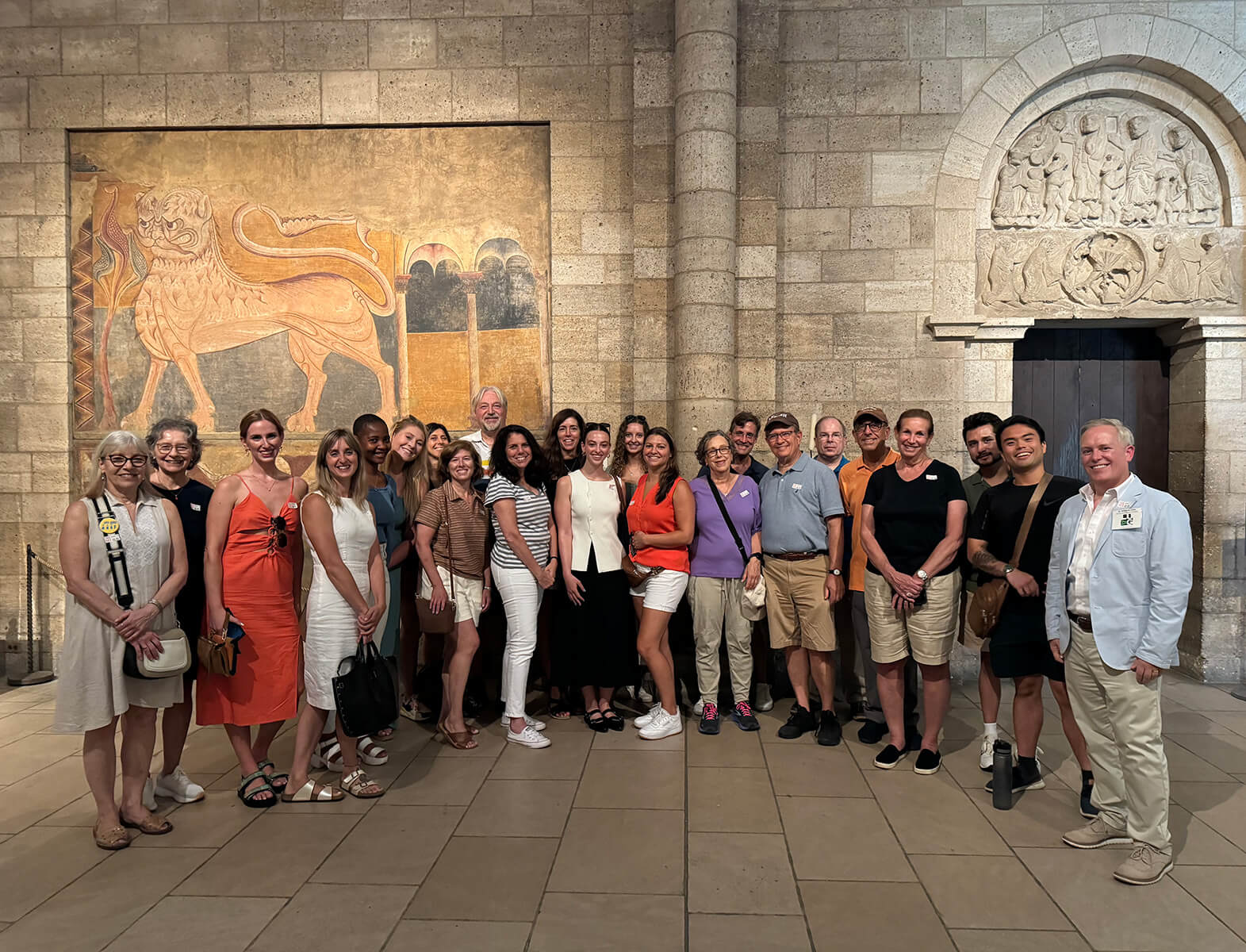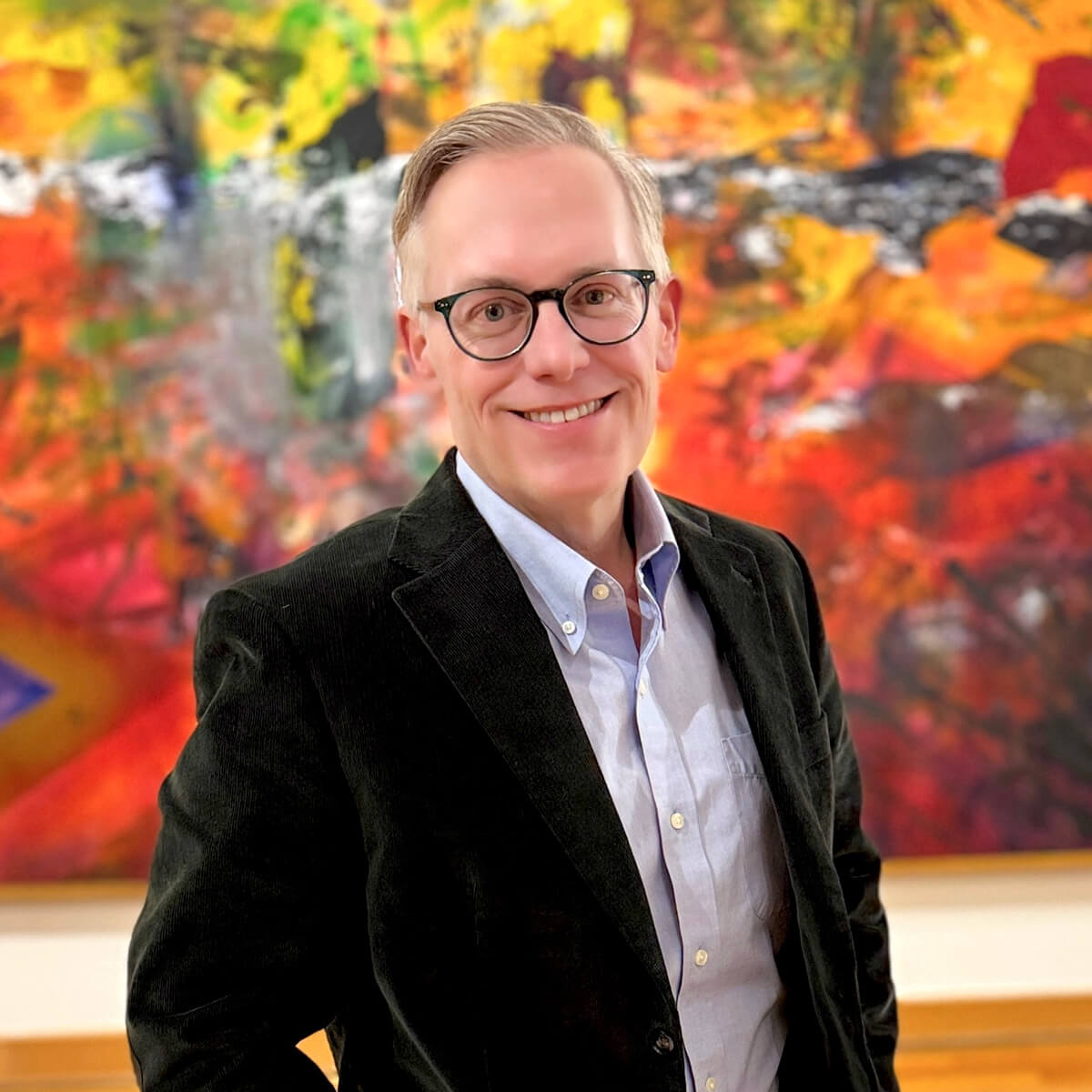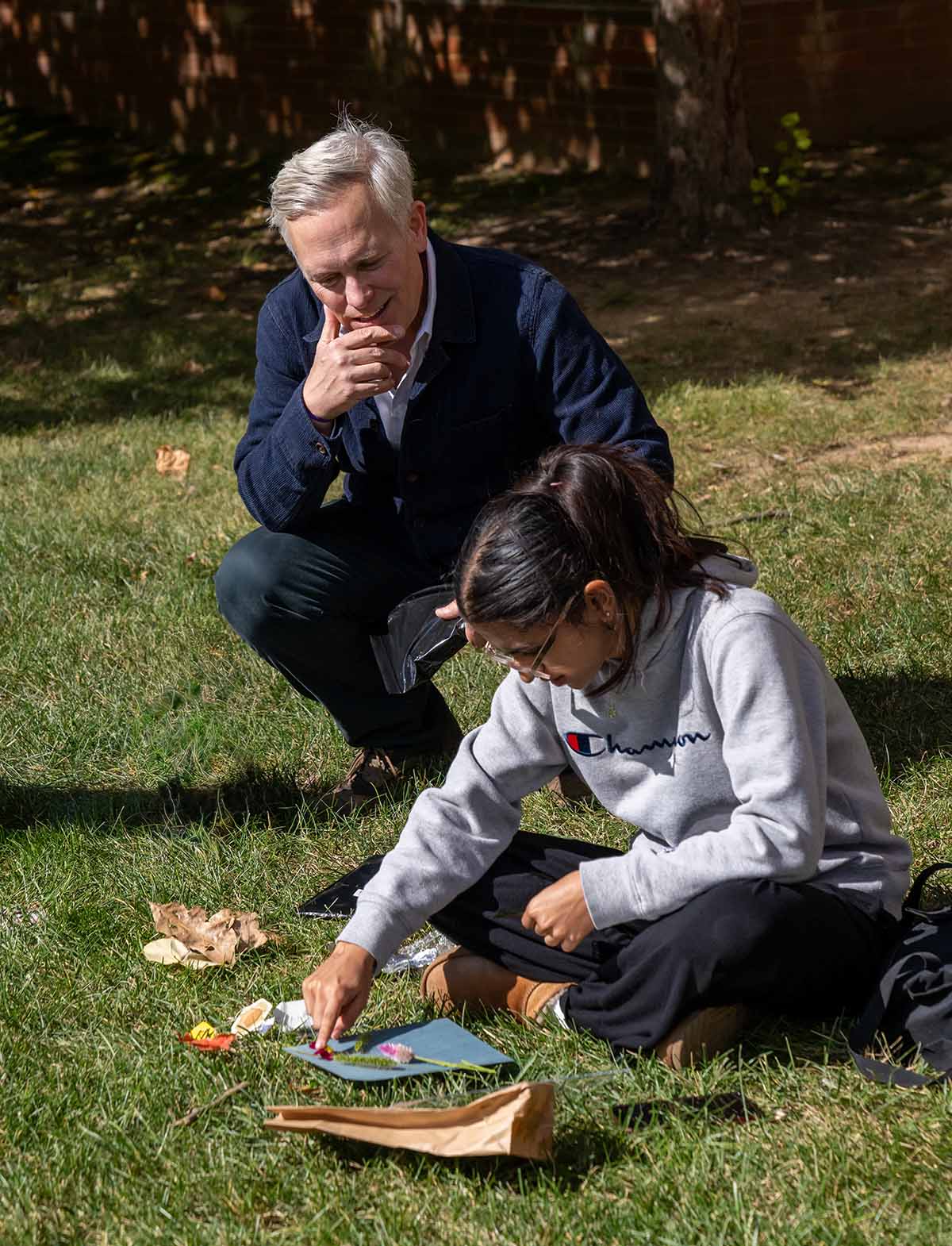“This whole region is a place for makers. It’s seeped into the DNA of Lehigh,” reflects William Crow, director of Lehigh University Art Galleries (LUAG) and professor of practice in the Department of Art, Architecture, and Design.
As LUAG celebrates its centennial, Crow says that the spirit of innovation is central not only to the region, but to the Lehigh experience and LUAG’s origin.
“We’re just a few blocks from the blast furnaces of Bethlehem Steel. They’re a monument not only to making and creating, but to the American imagination.”
Crow sees the iconic blast furnaces as a symbol of how the most elementary materials can yield something great.

A Pioneering University
The first formal art exhibition on campus happened in 1926, establishing Lehigh as a university leader in art. Crow notes that Lehigh was one of the first universities to embrace photography in the ’20s, well before it was widely accepted as a fine art medium.
“This is probably because of its synthesis of utilizing art and science together, which is very much at the core of the Lehigh experience,” says Crow.
In the 1930s, Lehigh borrowed artworks from top national museums to exhibit. Crow says this was because the university knew experiences with art could be a powerful democratizing force during trying geopolitical times, inspiring independent thinkers and challenging dominant narratives.
“Art museums are places where we can strengthen our skills in dealing with complexity,” he says. “We are a place where you can grapple with opposing points of view and talk about them. In a world that increasingly demands that we choose one answer or point of view, we need places that teach us to sit with ambiguity.”

Honoring the LUAG Legacy
For LUAG’s 100th anniversary, Crow is overseeing two major commemorative efforts that reflect the importance of art in the region and Lehigh’s legacy. Crow is particularly excited about LUAG’s centennial exhibition, Here and Now: 100 Years of LUAG, 100 Local Artists, which features works by Lehigh Valley artists and runs through May.
“Sometimes when institutions have a big anniversary, they turn inward,” says Crow. “But we wanted to make sure we were also turning our attention outward — to the communities that shape and inspire us.”
Additionally, in April, LUAG will release the first guidebook to its collections. This commemorative book features 100 pieces selected by students, faculty, staff, and community members from Lehigh’s collection of more than 20,000 artworks.
“Rather than doing a typical highlights book, we decided to invite people to write short reflections from their unique point of view — how a work impacted them, how they taught with it, how it inspired their creative practice,” says Crow.
The guidebook, titled Creativity and Connection: Lehigh University Art Galleries at 100, will be available for purchase through University of Chicago Press in May. It’s available for preorder now.
As the galleries enter their next 100 years, Crow aims to increase accessibility to the collections in several ways: making physical spaces easier to navigate, ensuring exhibits have braille or large print aids, expanding Spanish-language and audio-described offerings, and mirroring the collections in an online platform so they can be available to a larger audience.

A Scholar in Our Midst
Crow is celebrating a personal honor as well. Next January through March, he will be in residence as a guest scholar at the J. Paul Getty Museum and Getty Research Institute in Los Angeles.
Since 1985, the Getty Scholars Program has invited artists, historians, and museum professionals from around the world to conduct independent research using Getty’s world-class resources. Crow describes the opportunity as both humbling and invigorating.
“I’m really honored to be selected to go,” he says. “It is one of those rare opportunities where they do not require a specific outcome. You really are given the time and the space to focus on your research interests.”
During his time in residence, Crow will examine how the practice of sketching from works of art can support individual and collective well-being — a topic that intersects with his passion for visual art, museum education, and cognitive science.
The experience won’t be solitary. Scholars live together in a residential complex in Brentwood, fostering exchange and collaboration. Crow is energized by the prospect of building new relationships and renewing old ones — connections that, he notes, ultimately benefit students at Lehigh.
“I see it as not only my role, but my obligation to support the next generation of professionals in the field,” he says. “Those are all potential connections I can leverage to help launch our students into the next phase of their careers.”

The Intersection of Art and Education
Prior to his time at Lehigh, Crow worked as the inaugural educator-in-charge of teaching and learning at the Metropolitan Museum of Art while simultaneously holding professorial roles at places like New York University and Johns Hopkins University. When his husband told him about the Lehigh position, Crow immediately recognized it as a perfect fit — a rare opportunity to lead a museum within an academic setting while continuing to teach.
“Every semester that I teach, students are doing hands-on projects here in the art galleries,” he says. “They do research, write labels, curate exhibitions … It’s a magical intersection to be in.”
Crow emphasizes that Lehigh’s commitment to interdisciplinary work — where research, teaching, and learning all meet — make it an exciting place to be.
LUAG is free and open to students and community members alike.


